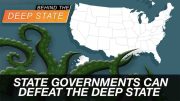
President Donald Trump promises that he is “just a few weeks” from issuing regulations that would outlaw bump fire stocks.
“We’re knocking out bump stocks,” Trump said at a White House news conference on October 1. “We’re in the final two or three weeks, and I’ll be able to write out bump stocks.”
This Republican president’s promise to “write out” bump fire stocks sounds suspiciously like his Democratic predecessor’s claim to possess the power to use his phone and pen to make law.
“I’ve got a pen and I’ve got a phone,” Barack Obama proclaimed in 2014. “And I can use that pen to sign executive orders and take executive actions and administrative actions,” he added.
{modulepos inner_text_ad}
This two-party, one policy situation is decades old. Regarding the presidential penchant for disarming the American people, I am reminded of a story I wrote in January 2014:
“In an executive ‘Fact Sheet’ issued January 3 by the White House, the president purports to establish new guidelines for “keep[ing] Guns out of Potentially Dangerous Hands.”
The next paragraph of that story can now be applied to both President Obama and President Trump:
“What President Obama — a former part-time law professor — seems not to understand is that every time he issues some executive order, presidential finding, or ‘fact sheet,’ he is exceeding the constitutional limits on his power and thereby violating his oath of office.”
All you need to do is change the last name of the president and change the words “fact sheet” to “memorandum” and the story is no different.
President Trump is exercising that same unconstitutional “authority” to infringe significantly on the rights protected by the Second Amendment, specifically, the right to “keep and bear arms.”
Trump’s attack on the Second Amendment in the form of banning bump fire stocks should come as no surprise.
In fact, back in February the president issued an official memorandum ordering the Department of Justice “to dedicate all available resources to complete the review of the comments received, and, as expeditiously as possible, to propose for notice and comment a rule banning all devices that turn legal weapons into machineguns.” Lest there be any misunderstanding, the memo identifies the device in question as “bump fire stocks and similar devices.”
For those of you counting on the National Rifle Association (NRA) to come to the defense of the Second Amendment, you probably don’t want to read any further.
The NRA released the following statement regarding federal regulation of bump fire stocks:
The NRA believes that devices designed to allow semi-automatic rifles to function like fully-automatic rifles should be subject to additional regulations.
So, no help from the NRA for Americans who believed the group to be defenders of the Second Amendment.
Of course, such a statement isn’t surprising considering that the very same press release reveals that the NRA doesn’t understand the purpose of the Second Amendment.
“In an increasingly dangerous world, the NRA remains focused on our mission: strengthening Americans’ Second Amendment freedom to defend themselves, their families and their communities,” the statement reads.
Wrong.
Our Founding Fathers were not concerned about protecting a man’s right to keep his home and family safe from “danger.” Our Founding Fathers protected the individual’s right to keep and bear arms because they knew that such was the only way to avoid being enslaved by tyrants.
They knew from their study of history that a tyrant’s first move was always to disarm the people, and generally to claim it was for their safety, and to establish a standing army so as to convince the people that they didn’t need arms to protect themselves, for the tyrant and his professional soldiers would do it for them. Sound familiar?
Consider this gem from William Blackstone, a man of immense and undeniable influence on the Founders and their understanding of rights, civil and natural.
In Volume I of his Commentaries on the Laws of England, Blackstone declares “the natural right of resistance and self-preservation, when the sanctions of society and laws are found insufficient to restrain the violence of oppression.”
Would anyone in America — or the world, for that matter — argue that the “sanctions of society and laws” are sufficient to “restrain violence” or oppression?
Thus, the people must be armed.
Commenting on Blackstone’s Commentaries, eminent Founding Era jurist and constitutional scholar St. George Tucker put a finer point on the purpose of protecting the natural right of all people to keep and bear arms. He wrote:
This may be considered as the true palladium of liberty…. The right of self defense is the first law of nature: in most governments it has been the study of rulers to confine this right within the narrowest limits possible. Wherever standing armies are kept up, and the right of the people to keep and bear arms is, under any colour or pretext whatsoever, prohibited, liberty, if not already annihilated, is on the brink of destruction.
Enough said.
As for President Trump, he has done many things consistent with his solemn oath to preserve, protect, and defend the Constitution. His issuing of a regulation to shrink the scope of the Second Amendment is not one of them, however.
It’s this easy: Article I, Section 1 of the Constitution grants federal lawmaking power exclusively to the Congress.
Regardless of the word he uses to describe it, any time the president orders the executive branch to create law by executive decree, he is usurping the authority of the legislature.
Finally, in his memo, President Trump writes that he was motivated to begin the process of banning bump fire stocks “after the deadly mass murder in Las Vegas, Nevada, on October 1, 2017.”
No matter how many people are clamoring for protection, no matter how many madmen go on murderous sprees, the president is not constitutionally authorized to take “executive actions” that encroach upon rights protected by the Constitution — in this case, the right of the people to keep and bear arms.
Photo: AP Images



